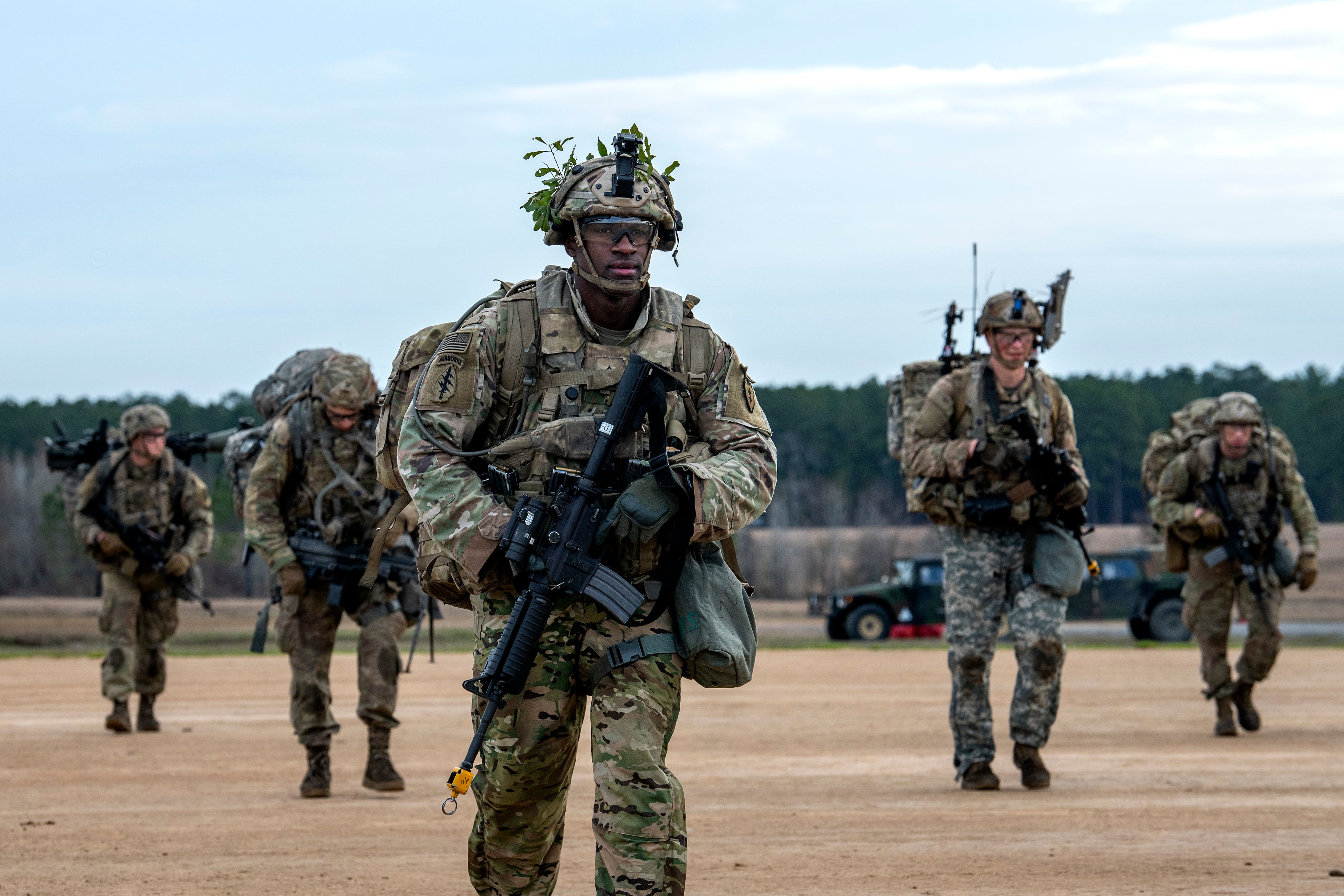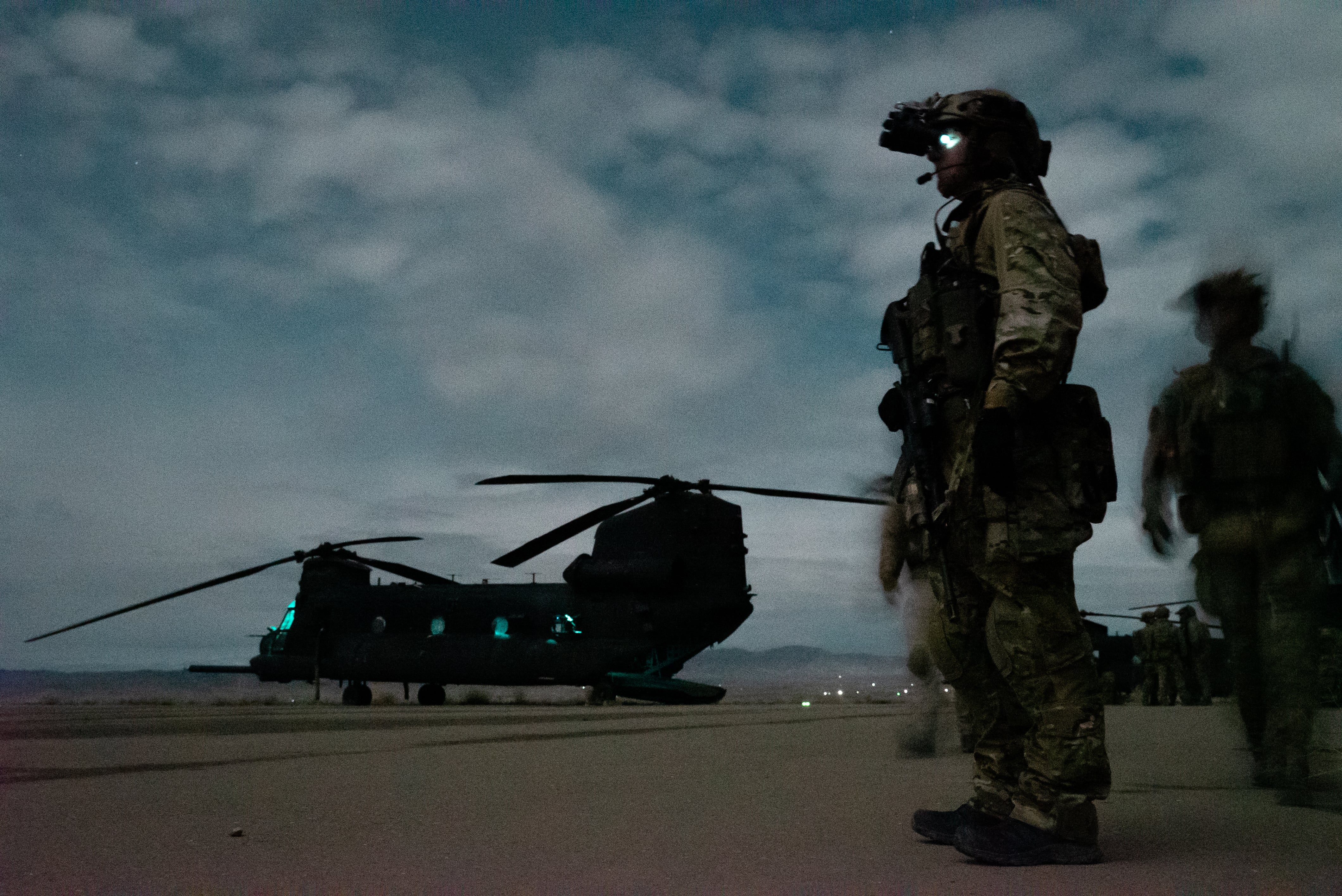The Army doesn’t plan to cut into its planned end-strength growth as long as the operations tempo remains high, the service secretary and Army chief of staff said during a press gaggle Wednesday.
“When you have tough [deploy]-to-dwell ratios like we face, we got to continue to grow or we got to reduce demand,” said Secretary of the Army Ryan McCarthy. “This is simple economics.”
The Army has spent the past few years reviewing legacy systems and modernization programs, cutting those it doesn’t need and reallocating funds to those it deems the most important to get the service ready for future fights.
Those appraisals came as the Army worked to rehabilitate its end-strength numbers and increase the readiness of units. And while some analysts have wondered whether cuts to troop numbers will eventually be done to fund modernization, Army leaders said they have no plans to do so at this time.
“We’re going to continue to make tough choices in the research, development and acquisition portfolio until it pressurizes to a point where we can’t sustain it, but that’s years from now,” McCarthy said.
Deploy-to-dwell ratios decreased modestly as the wars in Afghanistan and Iraq lowered the number of boots on the ground following the surge years. However, the Army still rotates brigades through Europe as part of the Atlantic Resolve commitment to NATO allies; to Asia as part of a program to court partners surrounding China; and to Africa to help build militaries in developing countries on the continent.
It’s also no secret that the vast majority of combat casualties in America’s foreign wars remain relegated to the Army. Fourteen of the 17 U.S. troops killed in action in Afghanistan last year were soldiers. Of the 192 U.S. personnel wounded in action, more than 170 were soldiers.
RELATED

“We equip soldiers; we don’t man equipment,” said Army Chief of Staff James McConville.
In total, the Army meets 60 percent of the combatant commanders’ needs across the world. Operational demands put a strain on soldiers, their families and their gear.
“Would we like a bigger Army? Absolutely," McConville added. “But at the end of the day we want to make sure they have the quality of life that they deserve and we want to make sure they have the best equipment that money can buy, so that’s the sweet spot that we’re trying to find.”
Combatant command deployments come on top of the training center rotations the Army completes at Fort Irwin, California and Fort Polk, Louisiana, both of which require units to mobilize to the ranges at those posts and conduct weeks of exercises.
The Army is also planning a division-strength exercise in Europe this year, requiring the mobilization of 20,000 soldiers from the continental United States, as well as another division-strength exercise in Asia next year.
“When you’re faced with 1:1 or less than 1:1 dwell, we got to put more people in the formation," McCarthy said. "I mean, we got to protect our people. It’s the greatest resource we have.”
Right now, the Army plans to grow by about 1,000 soldiers per year for the next four or five years.
Kyle Rempfer was an editor and reporter who has covered combat operations, criminal cases, foreign military assistance and training accidents. Before entering journalism, Kyle served in U.S. Air Force Special Tactics and deployed in 2014 to Paktika Province, Afghanistan, and Baghdad, Iraq.




